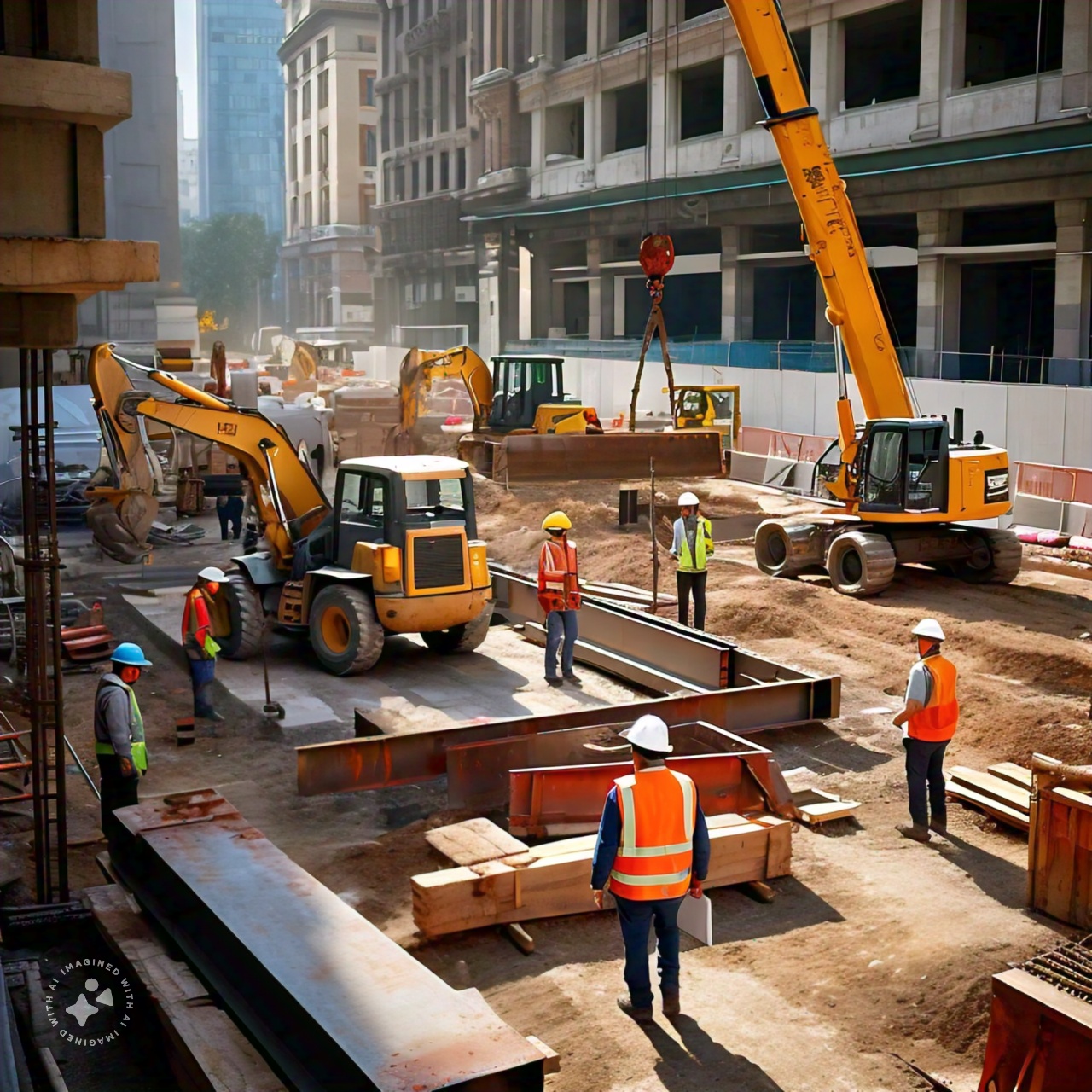Setting up a site is more than just breaking ground and getting started; it’s also about planning, following rules and putting safety measures in place to ensure productivity and safety throughout the project.
The first phase sets the foundation for efficient working and a successful outcome whatever the size of the project – small refurb or big build. We look at six key things project managers and site managers should be paying attention to when setting up a site in this guide.
1. Safety First: Creating a Safe Environment
In construction where risks need to be minimised to protect employees and site visitors, safety is top priority. Before starting any job you need to do a full risk assessment. This will identify risks specific to the site and its surroundings, such as uneven ground, overhead power lines or passing traffic.
Putting Safety Measures in Place:
Wear PPE (Personal Protection Equipment): Make sure all employees are wearing the correct personal protective equipment (PPE), high-visibility vests, hard hats, safety glasses and gloves.
Site Markers and Obstacles: Use signage to clearly show pedestrian routes, emergency exits and hazardous areas. To prevent unauthorised access or falls from height use guardrails or physical barriers.
Safety Training and Briefings: Give all staff regular safety briefings and training. Make sure everyone knows the emergency procedures and is trained to use first aid kits and fire extinguishers.
Ongoing monitoring and development:
Safety Inspections: Check the area regularly for risks and compliance with safety rules. Resolve any issues to keep the site safe.
Safety Culture: Foster a safety culture where all staff feel able to raise safety concerns and suggestions for improvement.
Building crews can reduce project delays and legal liabilities by putting safety first from the start. This reduces the risk of accidents and injuries.
Securing the Site: Preventing Theft and Unauthorised Access
Safety and securing valuable materials and equipment are closely linked to securing the site. Since theft and vandalism is rife on construction sites, site security is key.
Site Security Measures:
Barriers: Install a strong perimeter fence around the site to keep unwanted people out. When not in use, make sure the gates are locked and secured.
Surveillance: Consider installing CCTV cameras to keep an eye on key areas of the site, including entrance points and storage areas.
Security Staff: Employ security guards to patrol the site after hours depending on the size and location of the project.
SKU Tracking: Implement a system to track and inventory all the materials and equipment on site.
Community Awareness
Neighbourhood Communication: Inform the local businesses and residents of the project and the safety measures in place. Ask them to report any suspicious activity straight away.
In addition to securing valuable assets, a secure site means a safe and efficient working environment for all.
3. Entry and Exit: Simplifying Site Movement
During construction efficient entry and exit is key to maintaining productivity and minimising downtime. Congestion, delays and increased safety risks come from poorly designed entry and exit points.
Access Points:
Vehicle Access: To reduce congestion, allocate specific areas for construction vehicles to enter and exit. Make sure there is enough space for big vehicles and equipment to pass through these points.
Pedestrian Walkways: Make sure to properly sign pedestrian routes and where possible keep them separate from motorised traffic.
Proper Signage: Keep emergency entry points on site well signed. Make sure these paths are clear.
Traffic Management:
Traffic Controllers: Assign trained staff to manage traffic during peak hours or delivery times.
Temporary Roads: Build temporary paths or roads to access different areas of the site, especially where the ground is muddy or uneven.
In addition to overall safety by reducing the risk of accidents and ensuring emergency services can get to the site quickly in the event of an emergency, efficient entry and exit also increases productivity.
4. Services and Utilities: The Infrastructure of Building
Make sure all necessary services and utilities are on site or in place before the build starts. These services, including waste management, water and power, support day to day operations and the welfare of site staff.
Utility Planning:
Electricity: If permanent power is not available, arrange for temporary power connections. Check electrical systems comply with safety regulations.
Water: Make potable water available for drinking, cleaning and dust management. If you need temporary water tanks or connections consider installing them.
Sanitation Facilities: To meet worker hygiene requirements provide portable toilets and handwashing stations throughout the site such as Portable Toilets Ltd.
Waste Management:
Construction Waste: To separate and dispose of construction waste properly, put in place a waste management plan. Consider recycling options for materials like metals, wood and concrete.
Hazardous materials: Store and dispose of hazardous materials such as chemicals and solvents as per regulations.
Summary
In summary, setting up a site means environmental responsibility, efficiency and safety. To keep things running smoothly you need to prioritise safety, secure the site, utility access including portable toilets and manage environmental issues.
Using technology and simplifying the site layout increases productivity and project success. Construction teams can reduce risks, comply with regulations and deliver great project outcomes by doing this from the start.







